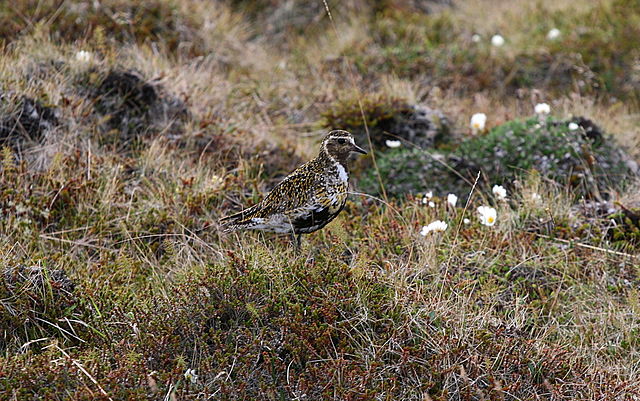Mimicry in Birds
Having offspring is an expensive and risky business. The expenses are paid in energy, which, in the living world, is the most expensive commodity - you can't do anything without it. You spend energy to gain new energy, so, naturally, when you produce something, you don't want it to go to waste.
If you're a bird, you provide your offspring with care. Parental care is a very conservative trait in evolution - once it evolves, it hardly ever goes away (unless you're a megapode, but we'll discuss those another time).
Let's say your species lives in an area where nest predation is very common. In such case, you're in double trouble: there's a high risk that your nestling will be devoured and if you spend a lot of time in the nest, too, there's also a chance that you yourself will get predated upon. How do you solve this problem?
In the course of evolution, some avian species evolved fascinating strategies to aid the survival of their offspring and also the adults who, thanks to these adaptations, need to spend less energy actively defending their chicks.
Laniocera hypopyrra, the cinereous mourner, is a bird well prepared for survival. If you take look inside its nest, you'll probably see a bright orange creature, looking like a big hairy caterpillar with white barbs full of toxins. Yet when this 'caterpillar' hears a familiar chirp, it's a caterpillar no more but a little bird, ready to get food from ma or pa! Check out the video!
Batesian mimicry occurs when a harmless organism mimics a harmful one. It is very rare among birds (they're usually on the other end of the equation) and the cinereous mourner's mimicry involves mimetic looks and mimetic behaviour, so it's a 2 in 1 combo!
Living in the Amazon can be dangerous, especially when it takes long for you to reach maturity and to become independent. L. hypopyrra needs at least about 20 days to be able to fly, and its parents only get to come back to the nest one by one each hour, so to be able to survive, the species has evolved an amazing ability to keep the predators away.
It lies in the nest with its beak down while the parents are gone, moving around slowly just like an aposematic caterpillar. The chick does not change its behaviour even when a parent comes back - it waits for a signal just in case it's a potential predator.
Laniisoma elegans, a bird from the same family Tityridae, displays a similar form of mimicry.
You don't have to go to the tropics to find such intriguingly colored chicks!
European golden plovers (Pluvialis apricaria) breed in the northern coastal regions of Eurasia and Greenland. They build their nests on the ground and line them with lichens, grasses and leaves, and their white eggs with brown spots are well camouflaged in the nest.
Their chicks are precocial and nidifugous, meaning that once they hatch, they're mature enough to move around and feed themselves. They're tiny and helpeless nonetheless, dependent on their parents for at least 25-33 days. Chicks rely on their moss-mimicking feathers that help them blend in with their surroundings to avoid predation.
Wanna learn more about moss? Read our article about Bryophytes.
Golden Plover chicks are some of the most beautifully coloured wader chicks, perfectly matched to their hiding places up on the high mossy plateaux in the Arctic tundra and other palearctic areas https://t.co/kkKjAf1oaf pic.twitter.com/mR1c9xYu0m
— Massimo (@Rainmaker1973) June 17, 2019

Photo credit: Hector Bottai
| Common name: | Cinereous mourner |
| Scientific name: | Laniocera hypopyrra |
| Phylum: | Chordata |
| Class: | Aves |
| Order: | Passeriformes |
| Family: | Tityridae |
| IUCN status: | Least concern |
| Population trend: | Decreasing |
| Scientific reading: |

Photo credit: Elma
| Common name: | European golden plover |
| Scientific name: | Pluvialis apricaria |
| Phylum: | Chordata |
| Class: | Aves |
| Order: | Charadriiformes |
| Family: | Charadriidae |
| IUCN status: | Least concern |
| Population trend: | Increasing |
| Scientific reading: |